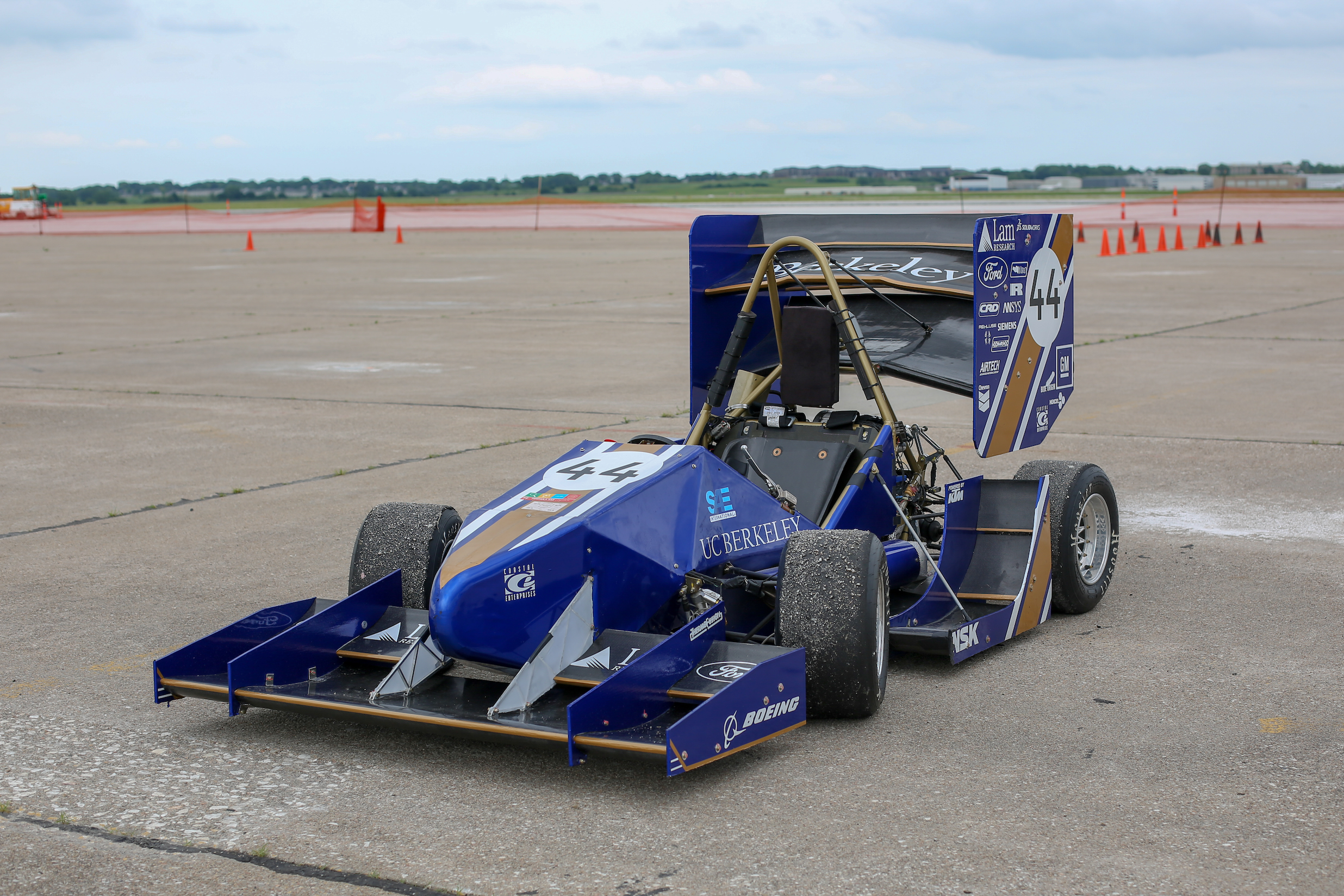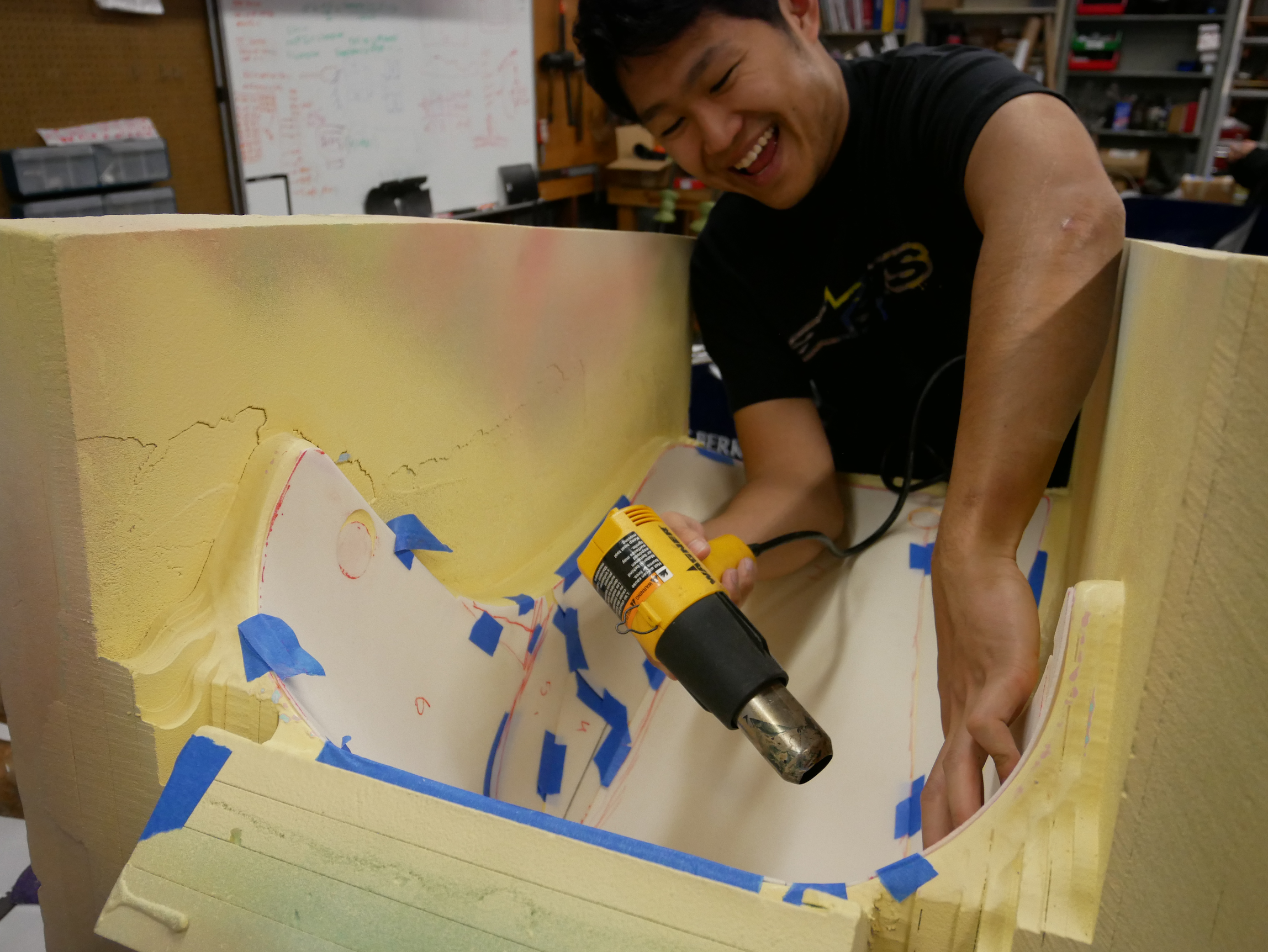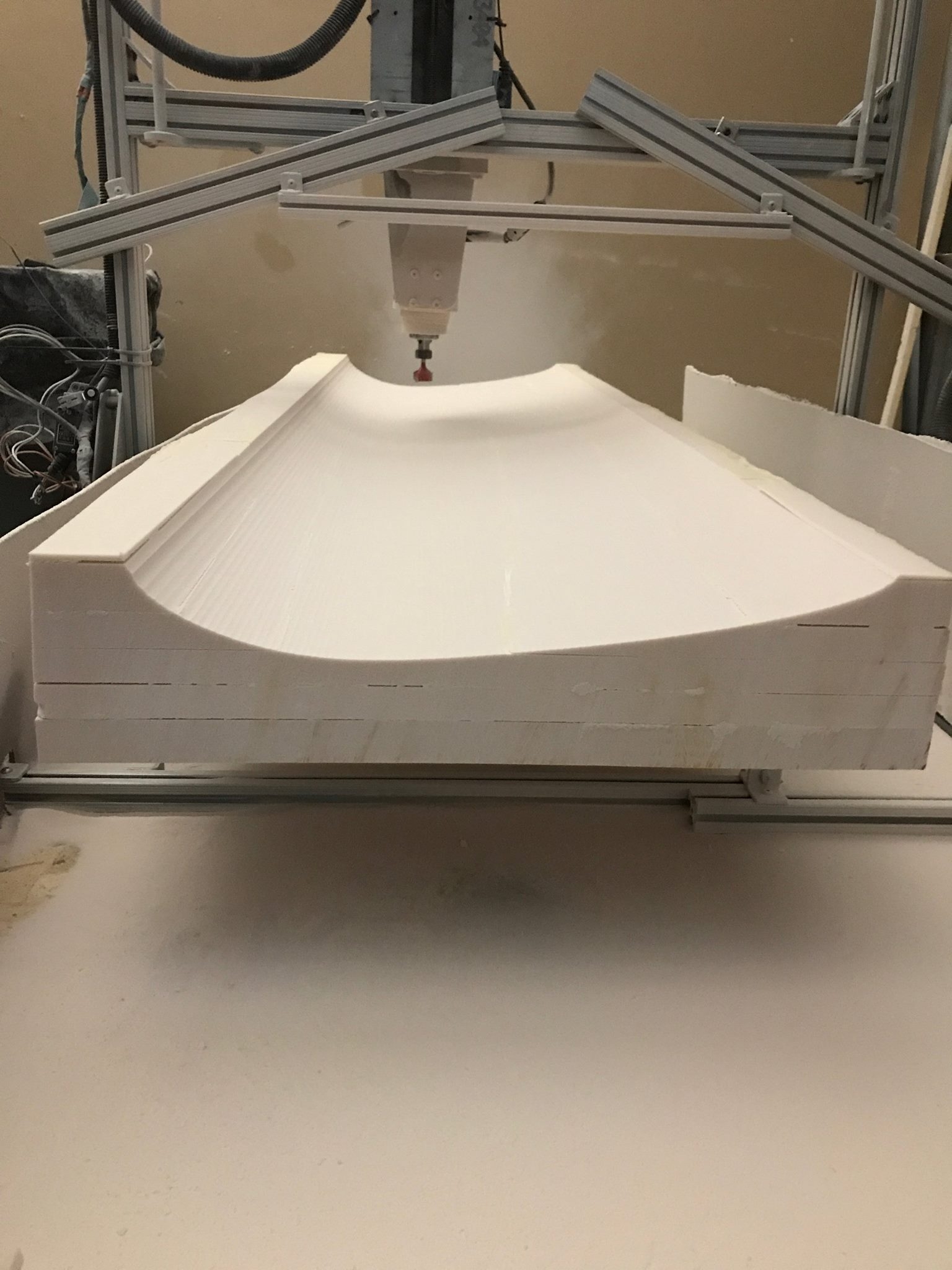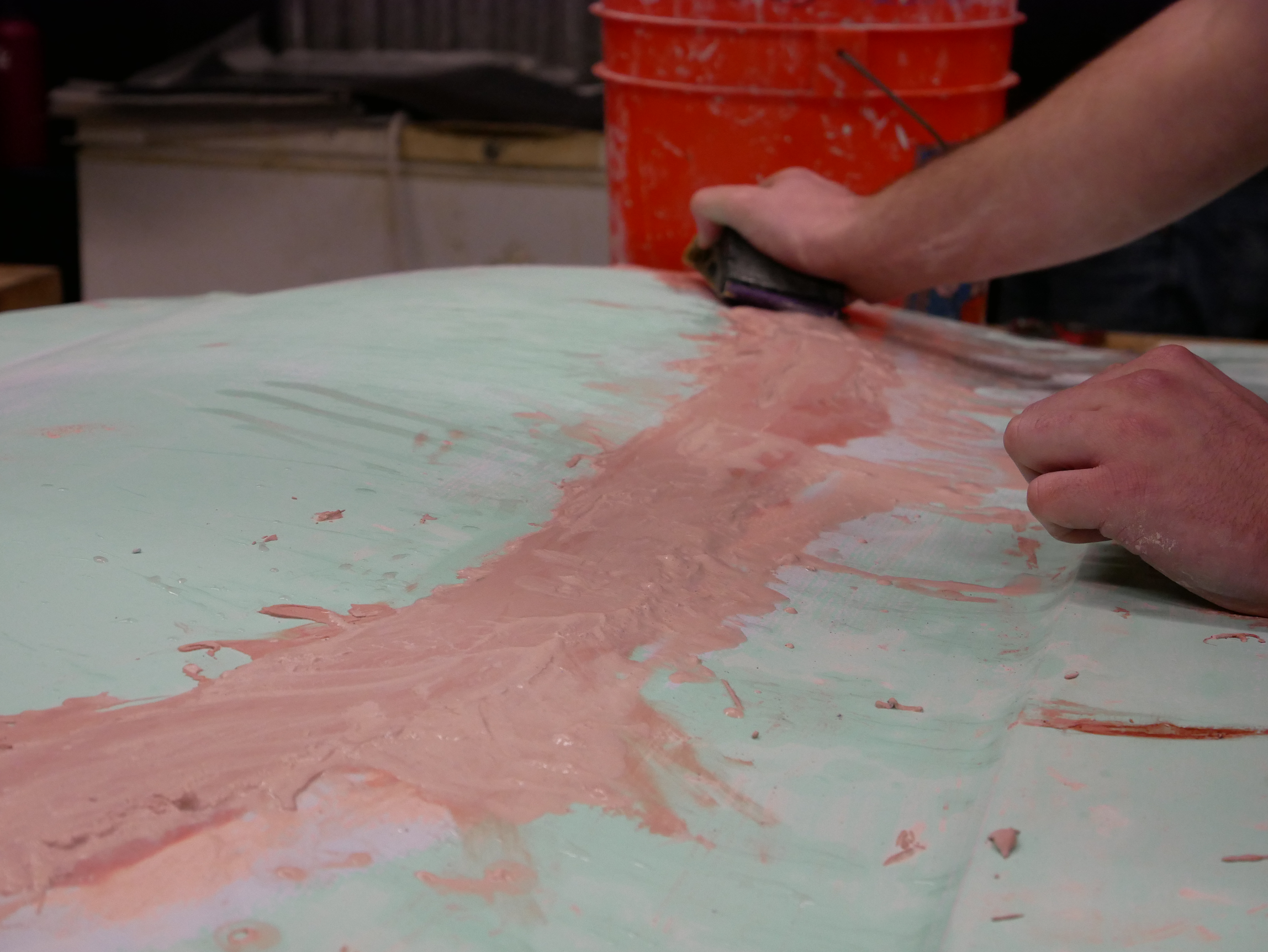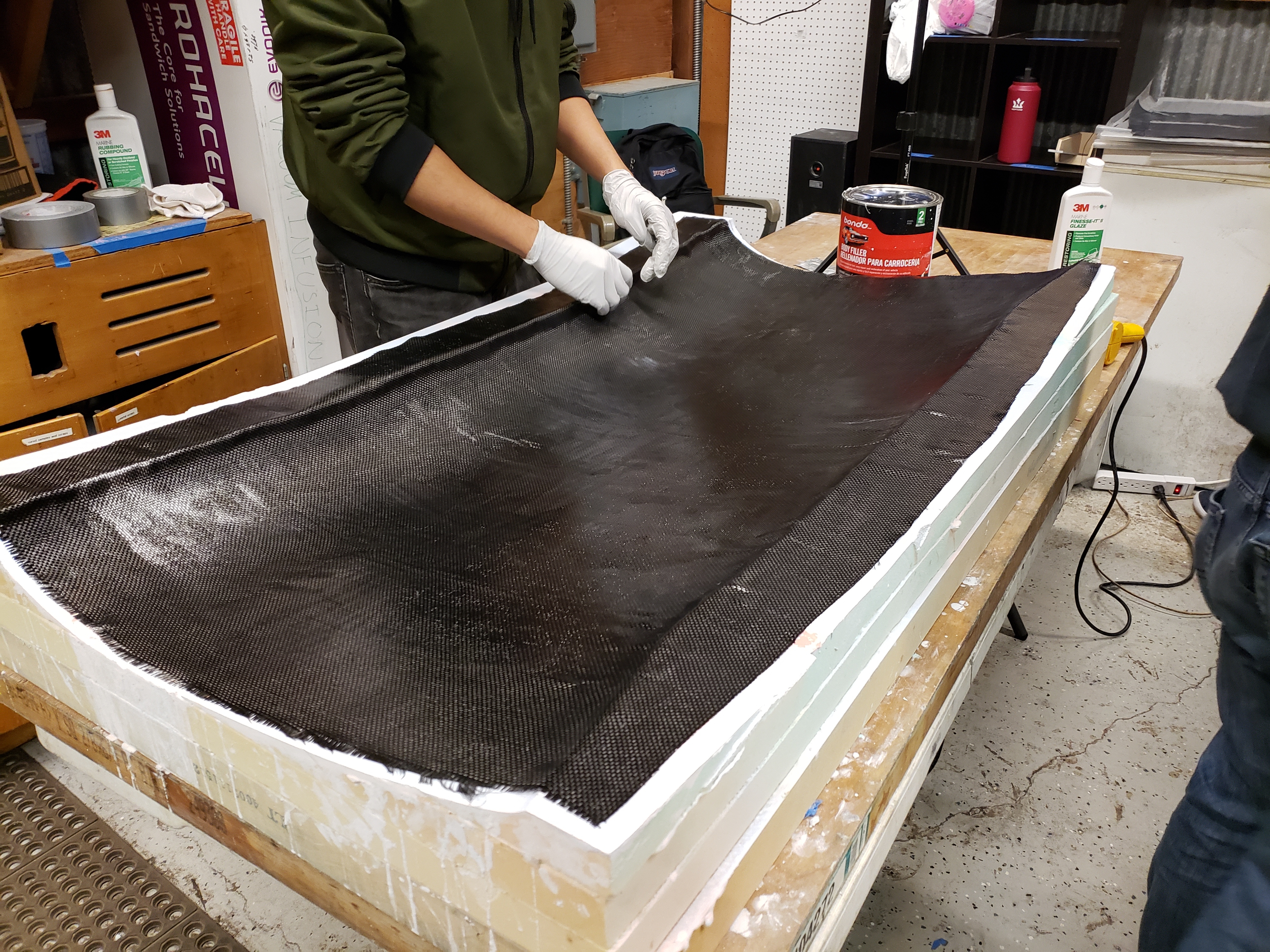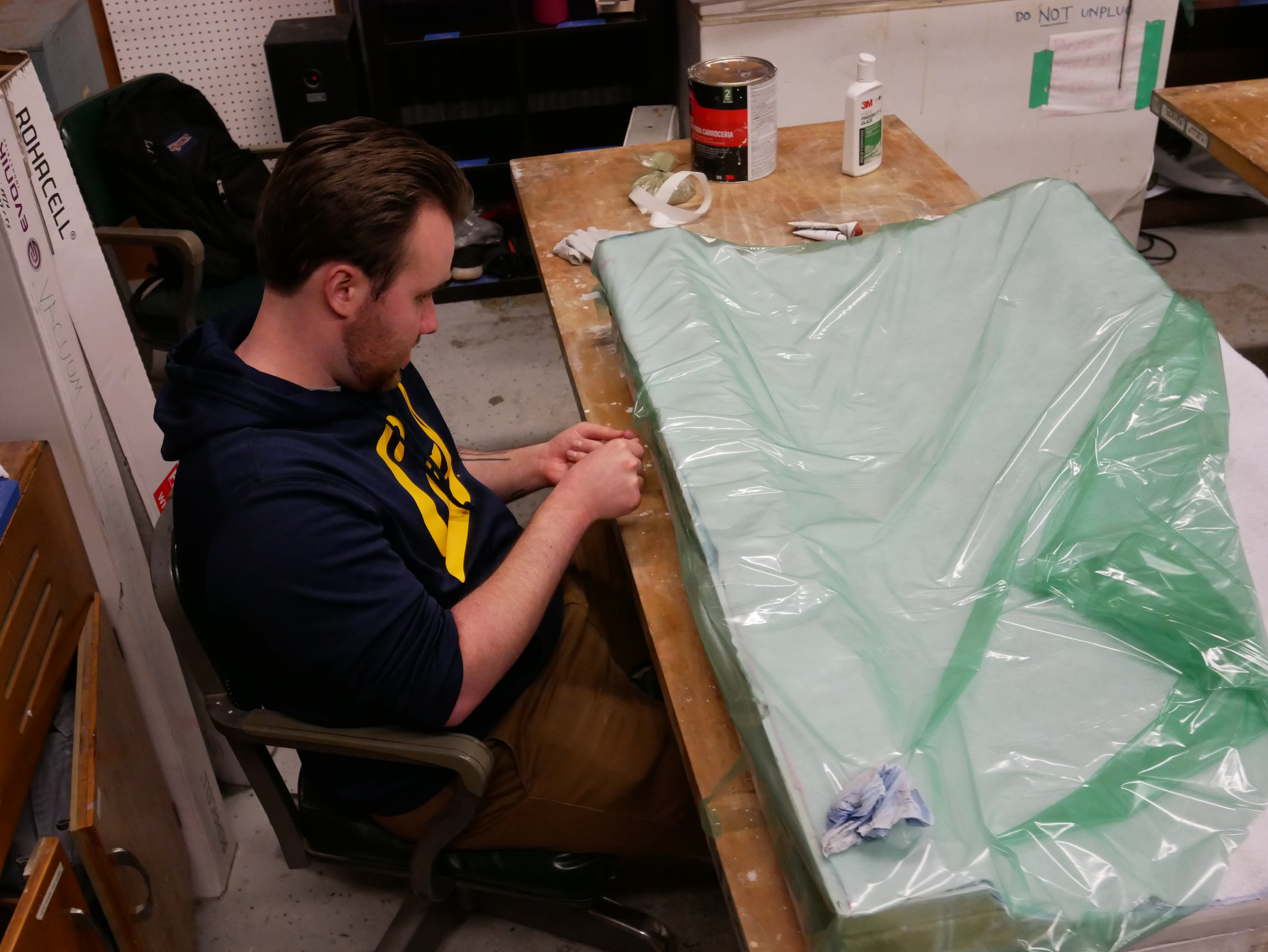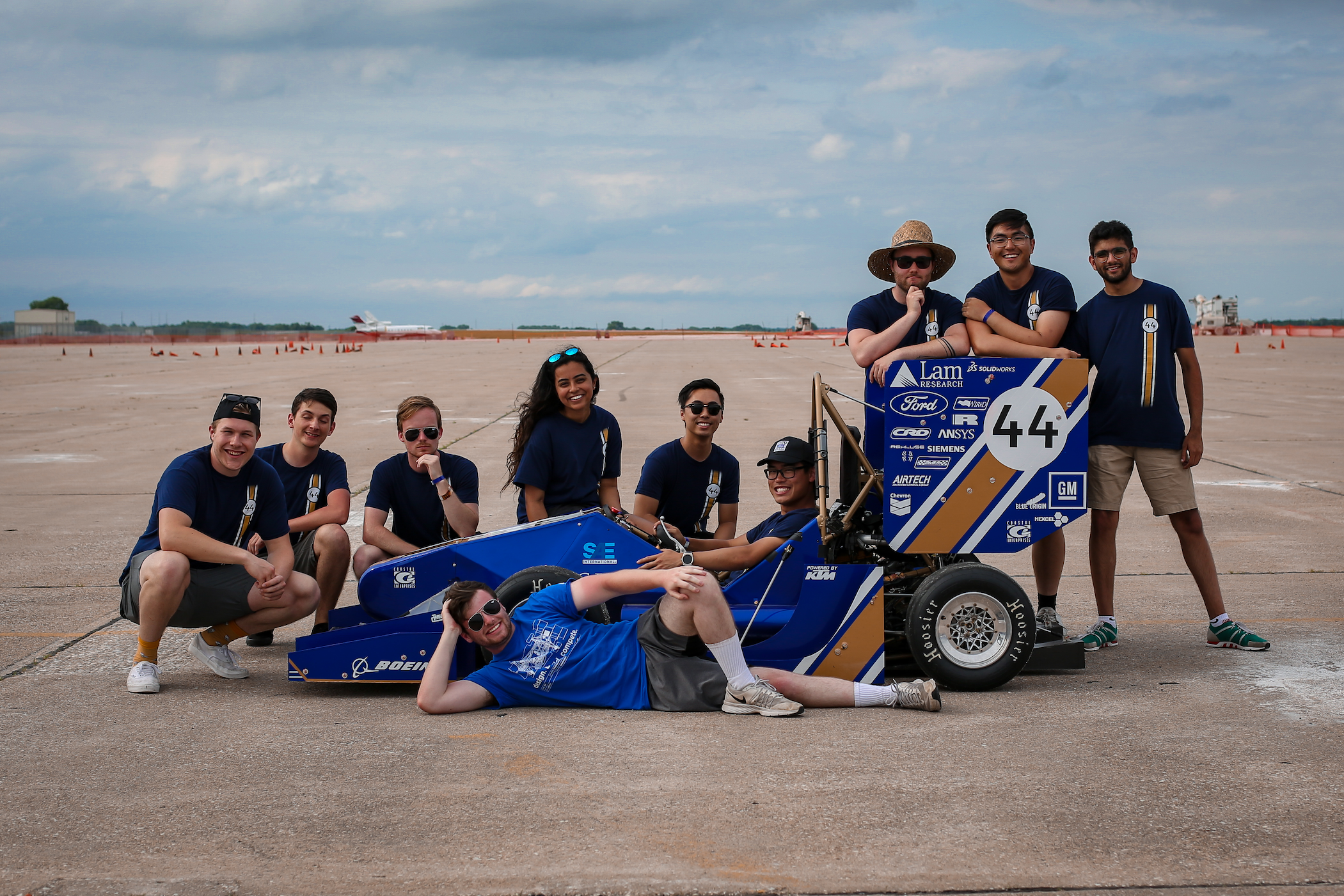The following Precision Board Guest Blog is written by Hunter Wheeler, a student of engineering at U.C. Berkeley. Hunter is part of the Berkeley Formula Racing program and describes how the Formula SAE Team used Precision Board urethane tooling board to make one-off molds for the carbon fiber pieces of their race car.
In Hunter’s own words…
The Precision Board tooling board donations provided to us by Coastal Enterprises is an invaluable part of our manufacturing and we wouldn’t be able to make our carbon fiber aerodynamic package, bodywork, or custom seat without it (Ed note: Coastal provides material to schools through our Donation Program. Students will typically bond pieces together for their final product). I’ll give a brief rundown of our design and manufacturing process in this blog.
We begin our design season by learning and reviewing aerodynamics fundamentals from textbooks and research papers. We set specifications for our target CLA (Downforce), CDA (Drag), package weight, and center of pressure using a LapSimulation model written by members of our team in MATLab. This model simulates the race car driving the different events at competition and gives an estimated points gain (or loss) for changes in parameters such as those listed above. We choose designs to pursue for the season after an analysis of this model, testing from previous years, and through consulting literature.
We model our wings and bodywork in SolidWorks and run Computational Fluid Dynamic (CFD) simulations in ANSYS Fluent.
After design, each carbon fiber component is manufactured on a one-off urethane mold made out of Precision Board. We start by cutting the foam to the required size, and glue sheets of urethane together to reach the necessary thickness for each mold.
The foam is then machined on our customer built CNC router.
We take the 3D models of our wings from SolidWorks and convert these to coordinates the CNC router can interpret. This process gives us a female profile for each wing half. We then apply a few layers of gelcoat to the surface of the mold using a paint spray gun to achieve a hard surface that can be polished to a smooth finish.
After sanding, waxing, and buffing the gelcoat, we lay-up carbon fiber on the mold.
This is enclosed in a vacuum bag and placed in an industrial oven to cure.
After about 6 hours, the carbon fiber has cured and we are able to remove a wing half.
This process is completed for each of the wings, body work panels, and any other carbon fiber components we manufacture. We then bond these wing-halves together and do some post processing to achieve our final manufactured profiles.
You can check out a video below we made from testing our vehicle at Crow’s Landing.
The Berkeley Formula Racing team has already competed for 2019. See the results in the chart below and keep an eye out for our 2020 car!
Formula SAE is an international engineering design competition that provides ambitious college students the unique opportunity to enhance their engineering design and project management skills through practical application. Berkeley Formula Racing creates a formula-style, single-seat race car over the course of a school year in order to participate in FSAE Lincoln, a competition between 80 teams every June. The competition is comprised of dynamic events to test the vehicle’s performance and reliability, and static events, to test the rigor and feasibility of the engineering design and business strategy. The competition pushes the boundaries of conventional learning, pushing students to develop skills applicable to the professional world that are overlooked in traditional school curriculum.
Coastal Enterprises manufactures Precision Board, a versatile, cost-effective and eco-friendly urethane material used extensively in the tooling industry. It is a closed-cell, rigid, dimensionally-stable substrate that is ideal for use in a number of different tooling applications.
Request free samples, get a quote or sign up for weekly e-blasts packed with helpful information.
